
3rd Grade Eureka Math Resources
- Subject:
- Mathematics
- Material Type:
- Activity/Lab
- Assessment
- Author:
- Liberty Public Schools
- Date Added:
- 06/10/2021

3rd Grade Eureka Math Resources

This Roadmap is a full year plan that covers the geography, economics, government and history of Michigan.

This is a short lesson plan for discussing/reviewing order of operations with technology integration.

This resource will enable students to determine flawed reasoning when generating equivalent fractions using multiplication.

This resource will enable students to determine flawed reasoning in a fraction comparison with unlike numerators and denominators.

Revolutionary history recipe word problems involving multiplication of a fraction by a whole number, e.g., by using visual fraction models and equations to represent the problem.

Multiplying fractions on a numberline task

This resource provides students with the opportunity to base arithmetic explanations/reasoning on concrete referents such as diagrams, connecting diagrams to a written method. Students will express a fraction with a denominator 10 as an equivalent fraction with a denominator of 100 and use that information to solve a problem.

4.OA.1. Interpret a multiplication equation as a comparison and represent verbal statements of multiplicative comparisons as multiplication equations.
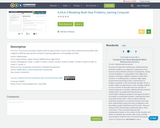
This resource provides students with the opportunity to solve a multi-step contextual word problem with a degree of difficulty appropriate to Grade 4, requiring application of knowledge and skills.

This resource will enable students to determine flawed reasoning in a division word problem that involves interpreting remainders.
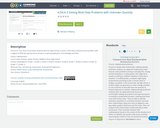
This resource provides students with the opportunity to solve a multi-step contextual word problem with a degree of difficulty appropriate to Grade 4, requiring application of knowledge and skills.

This resource requires students to present the solution to a multi-step problem in the form of valid chains of reasoning, using symbols appropriately. Students must use the four operations with whole numbers to solve problems.

This resource requires students to present the solution to a multi-step problem in the form of valid chains of reasoning, using symbols appropriately. Students must use the four operations with whole numbers to solve problems.
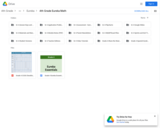
4th Grade Eureka Math

In this unit students explore the United States through the social studies discipline of geography. In exploring the United States in spatial terms, students first consider the location of the United States. They learn about and use a variety of geographic tools such as maps, globes, and satellite images to answer the question “Where is the United States?” Next, students examine the concept of place relative to the United States. They use songs, stories, photographs, and aerial images to investigate the question, “What is it like there?” and to describe significant physical and human characteristics. Students also use the concept of regions to compare sections of the United States. They build on their understanding that regions are defined by common characteristics and explore ways in which the United States can be divided into regions. Students then compare a region to which Michigan belongs with other regions in the United States using special purpose maps. In doing so, students examine geographic features such as elevation, climate, and patterns of population density in the United States. As a culminating project, students summarize what they have learned by creating a poster, picture book, Flipbook slide show or other visual describing the United States according to the geographic themes of location, place, and regions.
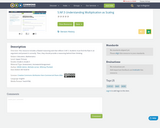
This resource includes a flawed reasoning task that reflects 5.NF.5. Students must find the flaw in an argument and present it correctly. Then, they should provide a reasoning behind their thinking.

Eureka math
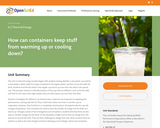
This unit on thermal energy transfer begins with students testing whether a new plastic cup sold by a store keeps a drink colder for longer compared to the regular plastic cup that comes free with the drink. Students find that the drink in the regular cup warms up more than the drink in the special cup. This prompts students to identify features of the cups that are different, such as the lid, walls, and hole for the straw, that might explain why one drink warms up more than the other.
Students investigate the different cup features they conjecture are important to explaining the phenomenon, starting with the lid. They model how matter can enter or exit the cup via evaporation However, they find that in a completely closed system, the liquid inside the cup still changes temperature. This motivates the need to trace the transfer of energy into the drink as it warms up. Through a series of lab investigations and simulations, students find that there are two ways to transfer energy into the drink: (1) the absorption of light and (2) thermal energy from the warmer air around the drink. They are then challenged to design their own drink container that can perform as well as the store-bought container, following a set of design criteria and constraints.

This unit on weather, climate, and water cycling is broken into four separate lesson sets. In the first two lesson sets, students explain small-scale storms. In the third and fourth lesson sets, students explain mesoscale weather systems and climate-level patterns of precipitation. Each of these two parts of the unit is grounded in a different anchoring phenomenon.
The unit starts out with anchoring students in the exploration of a series of videos of hailstorms from different locations across the country at different times of the year. The videos show that pieces of ice of different sizes (some very large) are falling out of the sky, sometimes accompanied by rain and wind gusts, all on days when the temperature of the air outside remained above freezing for the entire day. These cases spark questions and ideas for investigations, such as investigating how ice can be falling from the sky on a warm day, how clouds form, why some clouds produce storms with large amounts of precipitation and others don’t, and how all that water gets into the air in the first place.
The second half of the unit is anchored in the exploration of a weather report of a winter storm that affected large portions of the midwestern United States. The maps, transcripts, and video that students analyze show them that the storm was forecasted to produce large amounts of snow and ice accumulation in large portions of the northeastern part of the country within the next day. This case sparks questions and ideas for investigations around trying to figure out what could be causing such a large-scale storm and why it would end up affecting a different part of the country a day later.